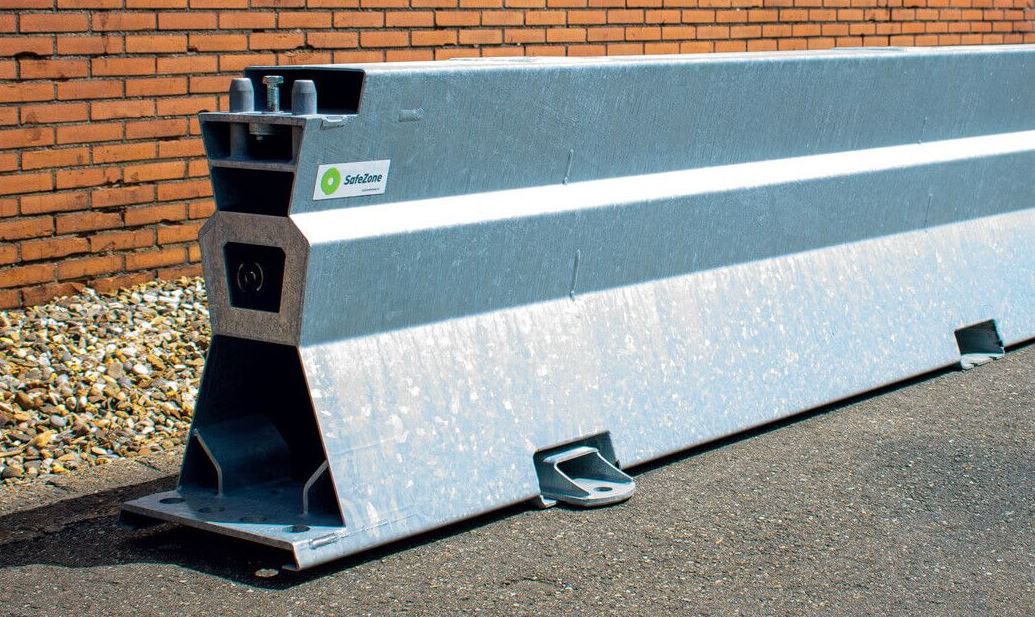When to use steel crash barriers

Steel traffic barriers with a MASH TL-4 rating give you one of the highest levels of roadside protection available.
Jaybro has recently introduced the SafeZone steel road barrier into our temporary barrier range.
Manufactured by Laura Metaal and in partnership with Australian Construction Products (ACP), Jaybro has the SafeZone barrier available for sale to construction and infrastructure contractors needing a reliable steel jersey barrier.
When should steel barriers be used?
Steel road barriers like the SafeZone are rated MASH TL-3 and MASH TL-4 meaning they can be used in zones with a maximum speed limit of 100km/hr.
Vehicles are constantly getting bigger and heavier and roads are getting busier throughout Australia. The MASH testing procedures show that this barrier provides predictable impact behaviour when impacted by a 10t truck travelling at 90km/h, impacting the barrier at 15 degrees.
This means that according to the Austroads approval specification, contractors can confidently use SafeZone steel barriers on the road network whenever the signposted speed is 100km/hr. These steel barriers are ideal for higher speed situations such as highway and main road construction and repair.
Steel vs concrete barriers
Whilst concrete road barriers are robust and provide good protection for road work sites, there is a growing need to ensure road barrier design keeps up with safety requirements and the needs of road and infrastructure projects globally.
Both steel and concrete barriers provide strong protection however the SafeZone barrier is lighter and easier to install whilst still offering excellent safety characteristics.
Steel barriers are lighter and easier to install
Concrete crash barriers are very heavy and require a more complex transport and installation method compared to steel safety barriers. Steel barriers are lightweight at only 92kg per metre, allowing for fast deployment on site, whereas concrete barriers weigh over 500kg per metre.
The 5.8-metre long steel SafeZone barriers are easy to install with a Hiab or crane truck, they quickly connect together, and can be easily uncoupled when necessary.
Steel barriers deflect and absorb impact
The strength and rigidity of a barrier needs to be tempered with flexibility and energy absorption, allowing the force of the impact to dissipate. This ensures that a sudden hard impact does not further injure motorists in an out of control vehicle.
If a vehicle collides with an inflexible barrier it will be redirected, whereas transferring the crushing or crumpling effect onto a steel barrier means a safer outcome for motorists. The SafeZone Barrier is the first MASH-TL4 Limited Deflection compliant temporary steel barrier on the market. It has been designed to not just deflect, but also absorb impact from vehicle collisions, making it safer than some concrete barriers.
Steel barriers are recyclable and have a longer lifespan
A small footprint means that more barriers can be transported on a single truck, helping to reduce fuel consumption and transport costs. With a 20-year life expectancy, steel crash barriers offer a significant reduction in CO2 emissions when compared with the maintenance and upkeep of concrete barriers.
Steel barriers from Jaybro
In the same way that crumple zones in vehicles are designed to improve safety on impact, a similar principle is being used to improve the performance of the innovative new SafeZone steel road barriers.
The SafeZone is the first MASH TL-4 Limited Deflection approved temporary steel barrier on the market and is available now from Jaybro.
 Sign In
Sign In 

